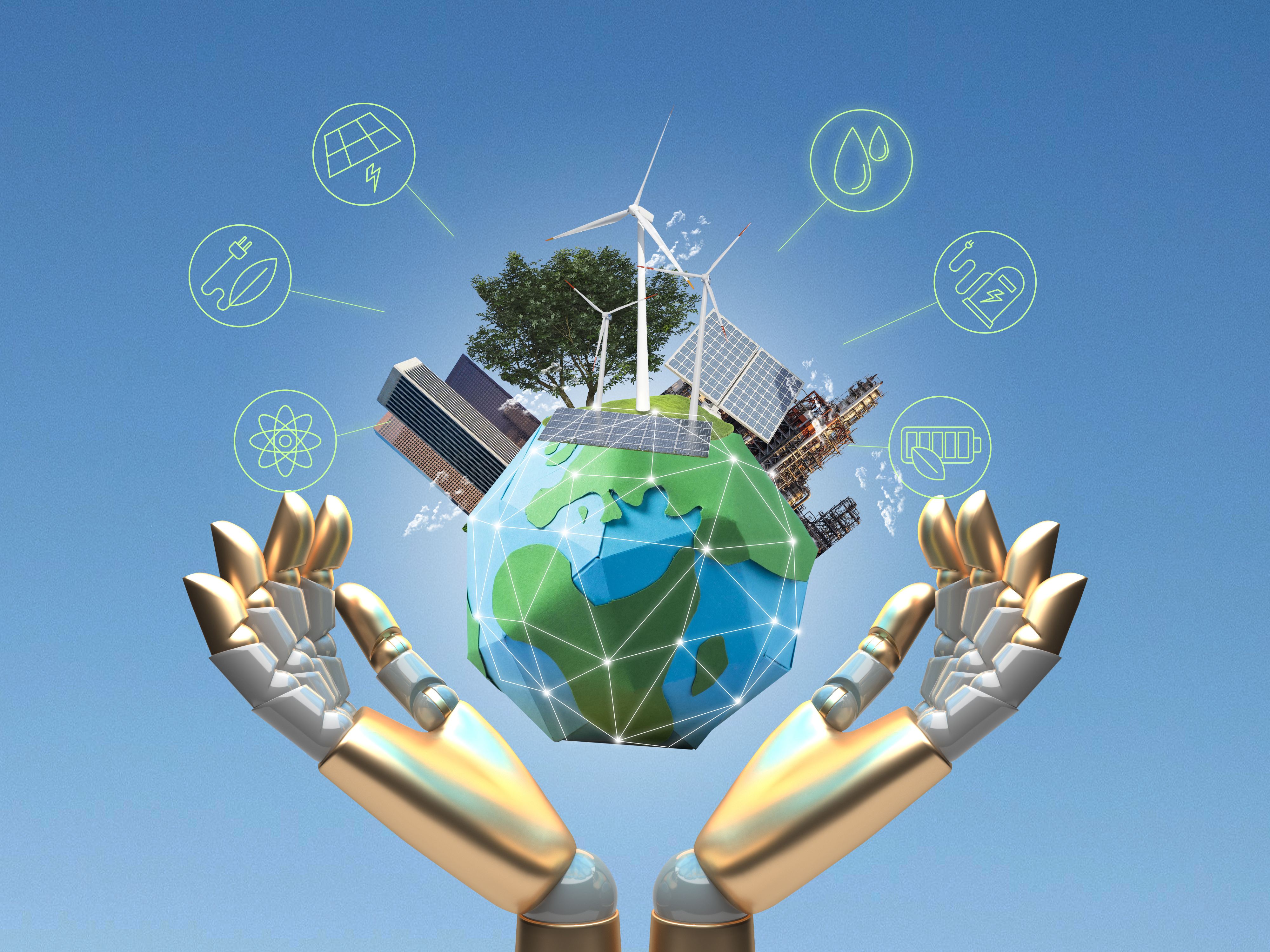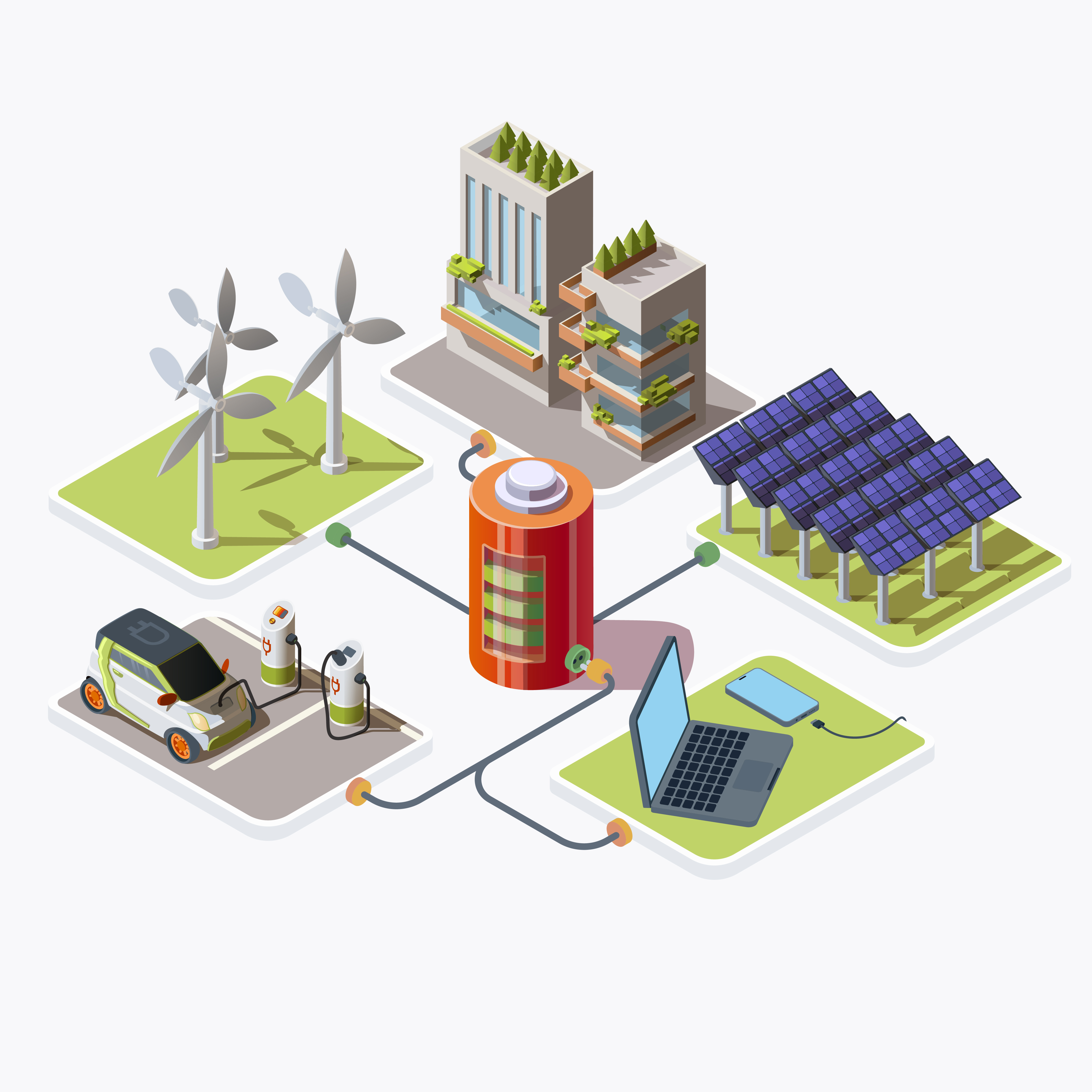Table of Contents
ToggleIntroduction
Renewable energy stands at the forefront of global efforts to mitigate climate change and transition towards a sustainable energy future. With increasing awareness of environmental concerns and the finite nature of fossil fuels, there has been a notable shift towards harnessing renewable sources of energy. This article delves into the various aspects of renewable energy, exploring its types, advantages, challenges, and future outlook.
The rapid growth of renewable energy technologies signals a promising future for sustainable energy development. As the world seeks to reduce its reliance on fossil fuels and curb greenhouse gas emissions, renewable energy stands out as a viable solution to meet growing energy demands while mitigating the impacts of climate change. In the following sections, we will explore the different types of renewable energy sources, their advantages, challenges, and the path forward towards a renewable-powered world.
Types of Renewable Energy Sources
Solar energy, derived from the sun’s radiation, is one of the most abundant and readily available sources of renewable energy. There are two primary technologies used to harness solar energy: photovoltaic (PV) systems, which convert sunlight directly into electricity, and concentrated solar power (CSP) systems, which use mirrors or lenses to concentrate sunlight onto a small area to produce heat. Solar energy offers numerous advantages, including unlimited availability, low operating costs, and minimal environmental impact. However, challenges such as intermittency and energy storage remain to be addressed for widespread adoption.
Wind energy involves harnessing the kinetic energy of the wind to generate electricity. Onshore wind turbines and offshore wind farms are the two main types of wind energy installations. Onshore wind farms are typically located on land and consist of rows of wind turbines connected to the grid. Offshore wind farms are situated in bodies of water, where wind speeds tend to be higher and more consistent. Wind energy is a clean and abundant resource, offering significant potential for reducing carbon emissions and meeting electricity demand. However, challenges such as land use conflicts, wildlife impacts, and intermittency need to be addressed to realize its full potential.
Hydropower
Hydropower, generated from the kinetic energy of flowing water, has been a significant source of renewable energy for centuries. There are two main types of hydropower systems: run-of-the-river systems, which generate electricity by diverting a portion of the river’s flow through a turbine, and dam-based hydropower systems, which use reservoirs to store water and regulate electricity generation. Hydropower offers several advantages, including reliability, flexibility, and low greenhouse gas emissions. However, concerns about environmental impacts, such as habitat disruption and fish migration barriers, have prompted calls for more sustainable hydropower development practices.
Biomass energy involves the use of organic materials, such as wood, agricultural residues, and organic waste, to generate heat, electricity, or biofuels. Bioenergy technologies, including combustion, gasification, and anaerobic digestion, convert biomass into usable forms of energy. Biomass energy is considered renewable because organic materials can be replenished through natural processes. However, concerns about sustainability, land use competition, and emissions associated with biomass combustion raise questions about its long-term viability as a clean energy source.
Geothermal Energy
Geothermal energy harnesses the heat stored beneath the Earth’s surface to generate electricity or provide direct heating and cooling. Geothermal power plants use steam or hot water extracted from underground reservoirs to drive turbines and produce electricity. Direct-use applications of geothermal energy include district heating, greenhouse heating, and industrial processes. Geothermal energy is considered a reliable and environmentally friendly source of renewable energy, with minimal greenhouse gas emissions and a small environmental footprint. However, its potential is limited to regions with high geothermal activity, and drilling and exploration costs can be prohibitive.
One of the most significant advantages of renewable energy is its minimal environmental impact compared to fossil fuels. Unlike coal, oil, and natural gas, which emit greenhouse gases and pollutants when burned, renewable energy sources produce little to no air or water pollution. By replacing fossil fuels with clean energy sources such as solar, wind, and hydropower, we can reduce carbon emissions, mitigate climate change, and protect ecosystems and biodiversity.
Renewable energy sources are inherently domestic and abundant, reducing reliance on imported fuels and volatile global energy markets. Unlike fossil fuels, which are subject to geopolitical tensions and price fluctuations, renewable energy resources are distributed evenly across the globe and can be harvested locally. By investing in renewable energy infrastructure and technologies, countries can enhance their energy security, reduce dependence on fossil fuel imports, and foster economic resilience.
Economic Opportunities
The transition to renewable energy offers significant economic opportunities, including job creation, investment, and innovation. According to the International Renewable Energy Agency (IRENA), the renewable energy sector employed over 12 million people globally in 2020, with the potential to create millions more jobs in the coming years. Renewable energy investments also stimulate economic growth, drive down energy costs, and attract private sector investment in clean energy technologies. By embracing renewable energy, countries can position themselves as leaders in the global transition to a low-carbon economy and reap the economic benefits of sustainable development.
Access to clean and affordable energy is essential for human development, health, and well-being. In many parts of the world, particularly in rural and underserved communities, lack of access to modern energy services hampers economic development, limits educational opportunities, and compromises public health. By expanding access to renewable energy technologies, such as off-grid solar power systems and clean cooking solutions, we can improve energy access, reduce indoor air pollution, and enhance quality of life for billions of people worldwide. Renewable energy also offers opportunities for decentralized energy production, empowering communities to take control of their energy future and build resilience against climate change impacts.
Challenges and Solutions
One of the primary challenges facing renewable energy is intermittency, or the variability of solar and wind resources. Unlike fossil fuel power plants, which can generate electricity continuously, solar and wind energy production fluctuates depending on weather conditions and time of day. Integrating large amounts of variable renewable energy into the grid poses technical challenges related to grid stability, reliability, and balancing supply and demand. However, advances in energy storage, smart grid technologies, and demand-side management offer solutions to address intermittency and improve grid flexibility.
While the cost of renewable energy technologies has declined significantly in recent years, they still face challenges in competing with fossil fuels on a level playing field. Subsidies, tax incentives, and other policy support mechanisms have been crucial in driving down the cost of renewables and leveling the playing field with conventional energy sources. However, further cost reductions are needed to make renewable energy economically viable without subsidies. Continued investment in research and development, economies of scale, and supportive policy frameworks can help drive down costs and improve the competitiveness of renewable energy technologies.
Advances in renewable energy technologies are essential for overcoming existing barriers and unlocking new opportunities for clean energy deployment. Research and development efforts are focused on improving the efficiency, reliability, and affordability of renewable energy technologies, as well as developing innovative solutions to address key challenges such as energy storage, grid integration, and materials sustainability. Breakthroughs in areas such as next-generation solar cells, advanced wind turbine designs, and grid-scale energy storage have the potential to accelerate the transition to a renewable-powered future.
Role of Renewable Energy in Combating Climate Change
Renewable energy plays a central role in combating climate change by reducing greenhouse gas emissions, phasing out fossil fuels, and transitioning to a low-carbon energy system. According to the Intergovernmental Panel on Climate Change (IPCC), limiting global warming to well below 2 degrees Celsius above pre-industrial levels requires rapid and far-reaching transitions in energy, land, infrastructure, and industrial systems. Renewable energy technologies offer a pathway to decarbonize the economy, meet growing energy demand, and achieve sustainable development goals. By investing in renewable energy and embracing clean energy solutions, we can mitigate the impacts of climate change, protect vulnerable communities, and build a more resilient and sustainable future for generations to come.
Conclusion
Renewable energy holds significant promise for a sustainable future, offering clean, abundant, and affordable alternatives to fossil fuels. From solar and wind to hydropower, biomass, and geothermal, renewable energy sources provide a diverse array of options for meeting our energy needs while reducing carbon emissions and protecting the planet. Despite challenges such as intermittency, cost competitiveness, and policy barriers, the rapid growth of renewable energy technologies signals a transformative shift towards a clean energy future. By harnessing the power of renewables, we can create a more resilient, equitable, and prosperous world for present and future generations. As we embark on this journey towards a renewable-powered future, let us seize the opportunities, overcome the challenges, and work together to build a brighter tomorrow for all.
This comprehensive article explores the multifaceted landscape of renewable energy, from its diverse sources and advantages to the challenges and solutions shaping its adoption. It emphasizes the transformative potential of renewable energy in addressing pressing energy and environmental challenges and outlines a path forward towards a sustainable and prosperous future.
FAQS
What exactly is renewable energy, and why is it important?
Renewable energy refers to energy derived from naturally replenishing sources such as sunlight, wind, water, biomass, and geothermal heat. It is crucial for reducing carbon emissions, enhancing energy security, and fostering economic development. Unlike fossil fuels, renewable energy sources offer a clean and sustainable alternative that helps mitigate climate change and protect the environment.
What are the main types of renewable energy sources?
The main types of renewable energy sources include solar energy, wind energy, hydropower, biomass energy, and geothermal energy. Solar energy is derived from sunlight, while wind energy harnesses the kinetic energy of the wind. Hydropower uses the flow of water to generate electricity, while biomass energy is produced from organic materials such as wood and agricultural residues. Geothermal energy utilizes heat from beneath the Earth’s surface to generate power.
What are some advantages of renewable energy?
Renewable energy offers numerous advantages, including environmental benefits such as reduced carbon emissions and air pollution, enhanced energy security through domestic and abundant energy sources, economic opportunities such as job creation and investment, and social benefits such as improved public health and energy access.
What are some challenges facing the widespread adoption of renewable energy?
Despite its promise, renewable energy faces several challenges, including intermittency and grid integration issues, cost competitiveness with fossil fuels, technological limitations, policy and regulatory barriers, and public awareness and acceptance. Addressing these challenges requires a concerted effort from governments, businesses, and civil society to overcome barriers and accelerate the transition to a renewable-powered future.
What is the future outlook for renewable energy?
The future outlook for renewable energy is promising, with projections indicating continued growth and expansion in the coming decades. Renewable energy sources are expected to become the dominant sources of electricity globally, driven by falling costs, supportive policies, and increasing environmental awareness. Advances in technology, policy, and finance are expected to further accelerate the transition to a clean energy future, creating a more sustainable and prosperous world for future generations.







